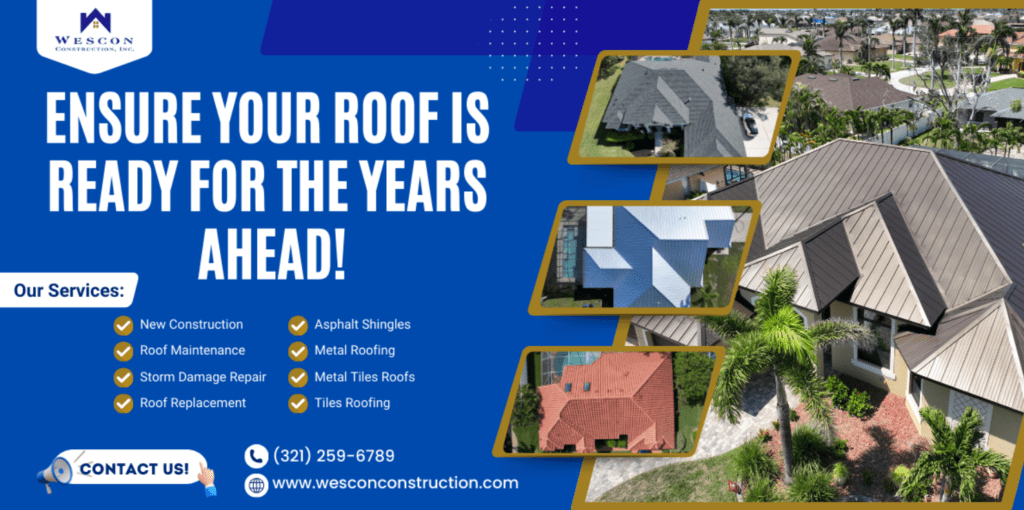Choosing The Best Hurricane Proof Roofs
Choosing the best hurricane proof roofs is crucial for ensuring the safety and longevity of your home in hurricane-prone areas. This article explores various aspects of hurricane-proof roofing, from materials and design considerations to installation techniques and maintenance strategies. Understanding these elements will help you make informed decisions to protect your property against severe weather conditions.
Key Takeaways
- Selecting the right materials, such as metal or clay and concrete tiles, is foundational for constructing a hurricane-proof roof.
- The design of the roof, including its shape, slope, and underlayment, plays a critical role in its ability to withstand high winds and heavy rains.
- Proper installation and regular maintenance are essential to ensure the durability and effectiveness of hurricane-proof roofing systems.

Understanding Hurricane Proof Roofing Materials
Benefits of Metal Roofs
When considering a hurricane proof roof, metal roofs stand out due to their durability and resistance to extreme weather conditions. Metal roofs are typically made from steel, aluminum, or sometimes copper, all of which are known for strength and resistance to damage. Unlike traditional roofing materials, they don’t absorb water, which minimizes the risk of water damage during a hurricane.
Advantages of Clay and Concrete Tiles
Clay and concrete tiles are another excellent option for your hurricane proof roof design. These materials not only offer high resistance to hurricane-induced winds but also add a layer of aesthetic appeal to your home. Their heavyweight makes them less likely to be lifted by strong winds, which is a crucial factor in maintaining roof integrity during storms.
Impact of Material Composition on Durability
The composition of roofing materials plays a significant role in determining their effectiveness in withstanding hurricanes. The best roof for hurricane scenarios is one that combines both physical resilience and flexibility. Materials like rubber or modified bitumen might offer good flexibility, but when it comes to ultimate resistance and durability, metal and tile roofs have a clear advantage.
Design Considerations for Hurricane Resistance
When designing a roof to withstand hurricanes, the shape and slope are crucial. A steep slope and aerodynamic shape can significantly reduce the lift that can cause structural damage during high winds. Innovations in roofing underlayment have also enhanced the resilience of roofs against severe weather, providing an extra layer of protection against water penetration. Securing roof attachments is essential; using the right techniques can prevent the roof from becoming a liability during a storm. Consulting with licensed contractors like those from Wescon Construction, Inc. can ensure that your roof is equipped with the best materials and methods for hurricane resistance.
Installation Techniques for Enhanced Durability
Professional vs. DIY Installation
Choosing between professional and DIY installation can greatly affect the longevity and safety of your roof. Professional installation ensures that your roof is installed according to the latest building codes and manufacturer specifications. This is crucial in hurricane-prone areas where proper installation can mean the difference between a roof that withstands the storm and one that fails.
Critical Installation Mistakes to Avoid
One of the most critical mistakes to avoid is underestimating the importance of securing the roof decking and underlayment. Failure to properly secure these elements can lead to catastrophic failures during a hurricane. Ensuring that all components are tightly fastened and using the right materials are key to maintaining the integrity of your roof.
Best Practices for Sealing and Waterproofing
To maximize the durability of your roof, it is essential to apply proper sealing and waterproofing techniques. This includes using high-quality sealants and ensuring that all joints and edges are completely sealed. A well-sealed roof prevents water intrusion, which is a major cause of roof damage during severe weather.
Maintenance and Inspection Strategies
Routine Inspection Checklist
Consistent maintenance plays a pivotal role in extending the lifespan of a roof. It’s essential to enlist professional roof inspectors to detect and address problems such as cracks or loose flashing promptly. These small repairs can prevent larger, more costly problems down the road.
Immediate Post-Storm Actions
After a hurricane, it’s essential to assess your roof for any damage. Immediate action can mitigate further complications, ensuring your home remains safe and secure.
Long-Term Maintenance Tips
Maintaining your roof over the years requires a consistent approach. Addressing minor issues promptly and ensuring that your roof is always in top condition will extend its lifespan and enhance its performance during storms.
Ensuring the longevity and safety of your infrastructure requires diligent maintenance and regular inspections. At Wescon Construction, Inc., we specialize in comprehensive strategies that keep your property in top condition.
Conclusion
Choosing the best hurricane-proof roof is crucial for ensuring the safety and longevity of your property in hurricane-prone areas. By understanding the different types of roofing materials and their respective strengths, homeowners can make informed decisions that balance cost, aesthetics, and durability. It’s important to consider local building codes, the specific climate conditions of your area, and the professional advice of certified roofing contractors. Investing in a robust roofing system not only protects your home but also significantly reduces the potential for costly repairs after severe weather events. Remember, the right roof is a long-term investment in the safety and security of your home.
Need Expert Advice on Your Roofing Project? Contact us today!
"*" indicates required fields
